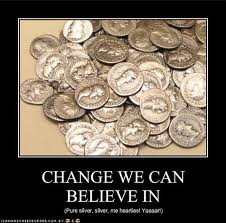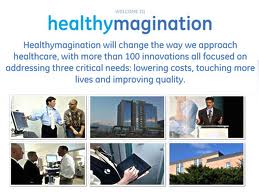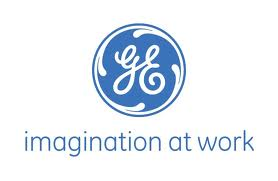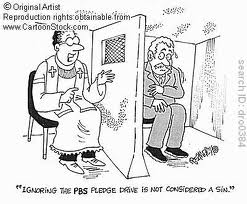 Welcome to Thursday of individual giving week where we’re looking at different individual giving strategies as a way to replace dwindling pools of government funding. We’re using characters from the movie “Finding Nemo” to look at various individual giving strategies.
Welcome to Thursday of individual giving week where we’re looking at different individual giving strategies as a way to replace dwindling pools of government funding. We’re using characters from the movie “Finding Nemo” to look at various individual giving strategies.
“Crush the Turtle” helped us look at special event fundraising on Monday. Tuesday’s post focused on “Marlin” and direct mail. Yesterday, Dory helped us peek at some of the considerations around ePhilanthropy. Today, we’re looking at the granddaddy of all individual giving strategies — an annual campaign driven by personal solicitation approaches.
Let’s turn to the shark characters from “Finding Nemo” to look at this classic individual giving strategy. Why the sharks? Here is the “Fish Friendly Shark Pledge” that Bruce the Shark took when we first met him on the silver screen:
“I am a nice shark. Not a mindless eatin’ machine. If I am to change this image, I must first change myself. Fish are friends. Not food.”
When I read this movie quote, I was transported back in time to a Boys & Girls Clubs of America leadership training in which I participated with my friends Paula, Teri and Tom. The “Fish Friendly Shark Pledge” reminded me of our team’s motto: “Donors are not ATMs.”
Let’s back up and start at the beginning. I’ll circle back to the sharks in just a moment.
Annual campaigns that are powered by personal, face-to-face solicitations are one of the most classic individual giving strategies employed by many of our most successful non-profit organizations:
- United Way’s annual campaign utilizes face-to-face group solicitations in the workplace.
- Boy Scouts’ “Friends of Scouting” (FOS) campaign utilizes face-to-face solicitations. Some of these approaches are in group settings (e.g. Pack meetings) and others are one-on-one with local business leaders and scouting alumni.
- Boys & Girls Clubs’ “It Just Takes One” (IJTO) campaign utilizes one-on-one, face-to-face solicitations with existing donors and qualified prospects from the community-at-large.
These kinds of campaigns are “classic” and ultra succesful because face-to-face solicitations are proven to be the most successful way to raise funds. National statistics demonstrate that 75-percent of prospects/donors who are asked in-person end up making a contribution of at least 50-percent of what the volunteer solicitor asked them to contribute.
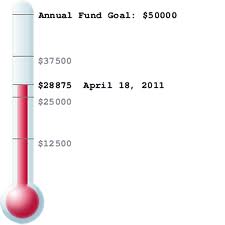 Whoa! Compare this 75-percent success rate with direct mail’s response rate of 0.5-percent to 3-percent. Then consider that the response rate for an email campaign can vary wildly — lower than 0.5-percent or upwards of 10-percent from what I’ve seen — depending on how warm the list is.
Whoa! Compare this 75-percent success rate with direct mail’s response rate of 0.5-percent to 3-percent. Then consider that the response rate for an email campaign can vary wildly — lower than 0.5-percent or upwards of 10-percent from what I’ve seen — depending on how warm the list is.
Of course, nothing comes close to touching 75-percent!
However, there is always a “catch,” and in the case of annual campaigning and personal solicitation strategies “the catch” is that most fundraising volunteers are scared to death of it. Nevertheless, utilization of best practices can lower fear levels to something manageable. Here are just a few things your agency will want to use if it decided to use this classic individual giving strategy:
- Develop a great case statement
- Provide volunteers with good solicitation materials
- Make sure volunteer solicitors have personally made a contribution before asking them to solicit their friends
- Don’t overload volunteer solicitors with many more than 5 prospects
- Be diligent with your prospect assignment process and only ask volunteer solicitors to visit prospect they know. NO COLD CALL!
- Bring in an experienced training professional to teach volunteer solicitors about the 12-step process on how to make an effective face-to-face solicitation.
- Develop and use “accountability tools” to help volunteer solicitors stay focused.
- Find ways to inject a “sense of positive urgency” into the campaign. (I don’t mean using crisis messages. I am referring to deadlines, challenge gifts, campaign goals, etc)
Thoughtful use of the annual campaign and personal solicitation technique as a tool in your individual giving toolkit can net your agency amazing results in a very short period of time compared to the years-and-years it might take to develop a successful direct mail or ePhilanthropy program.
So, here is where “Bruce the Shark” from Finding Nemo comes into play . . .
Soliciting someone using an annual campaign personal solicitation technique is . . . well . . . very personal. It is relationship-based, which means the relationship needs to be fed in a very different way than you might interact with mail donors or online donors. Donors with whom you visit and ask for a contribution in-person expect updates on how their contribution is being used. They usually want to hear from you . . . newsletters, phone calls, personal follow-up visits, invitations to receptions, etc.
“Know Thy Donor” . . . and figure out how they like to be kept informed
because you’ll pay the price if you use a “cookie cutter approach” for this group of donors!
When an agency doesn’t follow-up and build upon the relationship, that donor feels used. They feel like an ATM, and you look like a shark who is just out there preying upon people’s good nature.
So, my final words today are this . . . 1) add an annual campaign with face-to-face solicitation at the heart of your approach to your agency’s individual giving toolbox and 2) develop a really good stewardship plan that grows the relationship between your agency and the donor. You may want to even develop your own version of the “Fish Friendly Shark Pledge“.
Does your agency run an annual campaign and visit with donors in-person? How is that working for you? What is your success rate? What does your stewardship plan look like? How do you communicate ROI, program outcomes, and community impact information to your donors? If you developed your own version of a “Donor Friendly Pledge,” what would it sound like?
Please use the comment box below to share your thoughts because we can all learn from each other.
Here’s to your health!
Erik Anderson
Founder & President, The Healthy Non-Profit LLC
www.thehealthynonprofit.com
erik@thehealthynonprofit.com
http://twitter.com/#!/eanderson847
http://www.facebook.com/eanderson847
http://www.linkedin.com/in/erikanderson847













